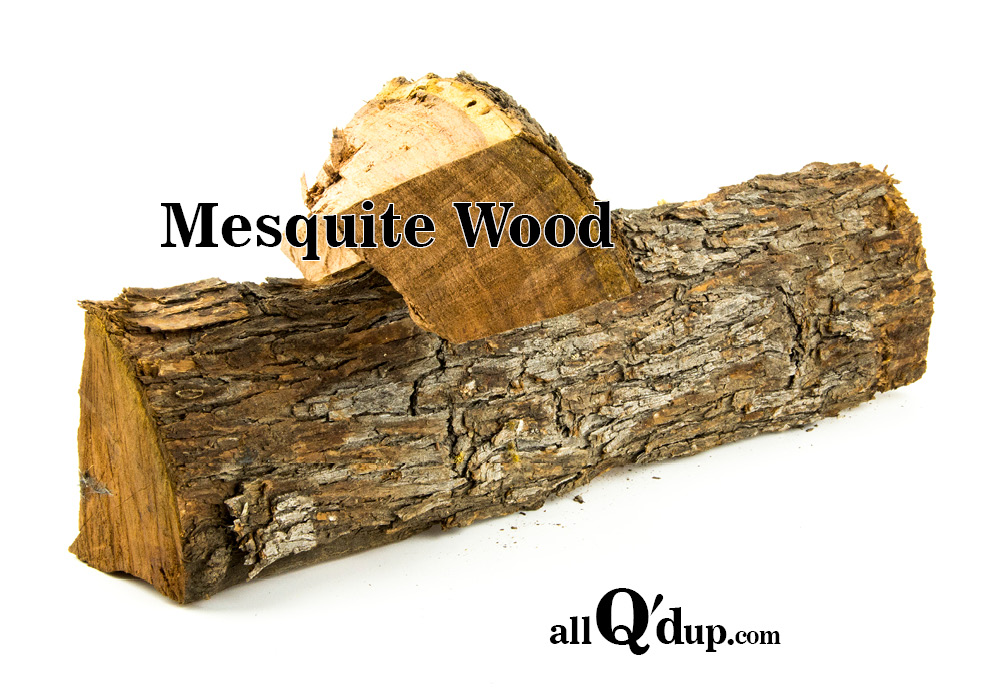Mesquite wood is closely related to Texas BBQ, and a popular hardwood to many industries. It is either native or introduced to much of the U.S. The wood burns hot and produces a strongly flavored smoke that is often paired with another wood. When used in barbecue it is more of a flavoring wood than a main smoking wood.
Types of foods that go well with mesquite:
- Beef and pork – the smoke is too strong to be used with poultry and seafood, although if it is used in conjunction with another wood mesquite does give other foods a very delicious flavor.
Mesquite Classifications and Types
The mesquite tree is in the legume family (Prosopis genus). Its flowers attract honey bees which in turn make a very fragrant and unique tasting honey. The protein and carbohydrate-rich bean pods produced by the mesquite trees are used by animals and humans as a food source. The mesquite tree is very drought tolerant with deep taproots that go extend far below the ground in search of water. It is a common tree in the Southwest.
The mesquite tree improves the nitrogen in the soil and produces a showy foliage. The limbs provide shelter to wild animals. It produces a beautiful and decorative hardwood for woodworkers and furniture makers. But despite all of its positives, mesquite can be hard to control once established. According to the USDA Natural Resources Conservation Service, most varieties of mesquite are an invasive species or a noxious weed.
Honey Mesquite – Prosopis glandulosa
The honey mesquite is also known as the Western honey mesquite. It is a thorny, brushy tree with sweet seedpods liked by livestock. The yellow flowers, that bloom from February to September, attract both bees and butterflies. Fast growing, it can grow up to 30 feet tall and 35 feet wide.
Velvet Mesquite – Prosopis velutina
This Arizona native shrubby tree is common in commercial landscaping and is decorative with its twisty looking branches. It is slower growing and requires training as a young tree to form a traditional tree shape rather than a bush. The sweet beans and flowers of the velvet mesquite are eaten by livestock.
Screwbean Mesquite – Prosopis pubescens
The screwbean mesquite produces yellow flowers and twisted seed pods resembling corkscrews. It is drought tolerant and attracts both butterflies and bees who like it for both the nectar and pollen.
Maverick Mesquite – Prosopis glandulosa “Maverick”
Thornless hybrid variety of mesquite, with fragrant yellow flowers.
Sources:
Mesquite – Description, History, Use and Benefits.” Mesquite – Description, History, Use and Benefits. Littlewolf Anthropology, n.d. Web. 28 Mar. 2015.
“Mesquite History and Information.” Mesquite History and Information. Lou Quallenberg Studios, n.d. Web. 28 Mar. 2015.
“NPIN: Native Plant Database.” Lady Bird Johnson Wildflower Center. University of Texas at Austin, n.d. Web. 28 Mar. 2015.
“Plants Profile for Prosopis (mesquite).” Plants Profile for Prosopis (mesquite). USDA Natural Resources Conservation Service, n.d. Web. 28 Mar. 2015.
“Prosopis Velutina.” Pima County Home Horticulture. University of Arizona Pima County Cooperative Extension, 16 May 2004. Web.
Ramos, Mary G. “Texas Almanac – The Source For All Things Texan Since 1857.” The Ubiquitous Mesquite. Texas Almanac from the Texas State Historical Association, n.d. Web. 28 Mar. 2015.




 Welcome to All Q’d Up. Dedicated to the art of barbecue.
Welcome to All Q’d Up. Dedicated to the art of barbecue. 